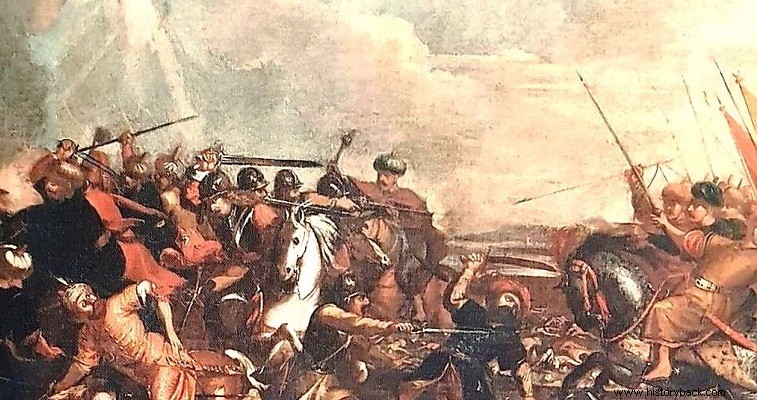
After his defeat before Vienna, Suleiman the so-called "magnificent" did not give up his plans to conquer the "Golden Apple" and bring Islam to the heart of Europe.
Suleiman, in 1532 set out at the head of a large army of 120,000 men. After crossing the Dravo River in Croatia, instead of following the usual route to Vienna , turned to Archduke Ferdinand's Austro-Hungarian territories.
On their way, the Turks captured 17 small towns and fortresses, sowing death and panic. Ferdinand hastily retreated leaving only 700 men in the small fortified town of Guins (today's Kyzeg, Hungary).
However, this small garrison delayed Suleiman dramatically. The Turks lost 25 days in front of the small fortified city. After this, Suleiman, having also the previous unpleasant experience of 1529 in Vienna, decided to retreat in humiliation.
However the Turkish sultan during his advance had sent a body of 8,000 light horsemen as an advance guard. Fanatic, looting Akintzides under Kazim Bey , were unleashed like the plagues that flew out from the Wounds of the Pharaoh, towards Styria.
They reached Wiener Neustadt and Lower Austria, slaughtering, murdering, burning and wreaking havoc. The Turks did not respect anything. The bellies of the pregnant women were opened and the fetuses were impaled on the spears. Women were rushed before the eyes of their men and then cut to pieces with swords.
By giving examples of their customs, the Turks have left tragic memories for the Austrians, who remember them to this day.
Death Trap
But when Suleiman decided to retreat his murderous raiders found themselves alone and isolated in enemy territory with the living inhabitants thirsting, literally, for revenge.
But the same was the case with the Austrian administration which decided to attempt the extermination of the murderous raiders. The Turks had three escape routes available. But the Austrians, under Sebastian von Burtenbach , they took care to block off the two with ditches and strong garrisons, obliging Kazim Bey to head for the third, at Leoberzdorf, southwest of Vienna.
There, however, a "warm" welcome awaited them. On September 19, 1532, 22,000 German and Austrian soldiers (20,000 infantry, 2,000 cavalry) were deployed in Leobersdorf, under Count Frederick the Wise of the Palatinate, the Austrian general Johann Katcianer and the Hungarian nobleman Balid Terek. What followed was not a battle but a savage slaughter of the Turks.
Of course the Austro-Germans did not take any prisoners. Even the Turks who tried to surrender begging for their lives were cut to pieces without any mercy. None of the 8,000 Turkish killers survived, certainly not even Kazim. It was a resounding, bloody message to Suleiman.
